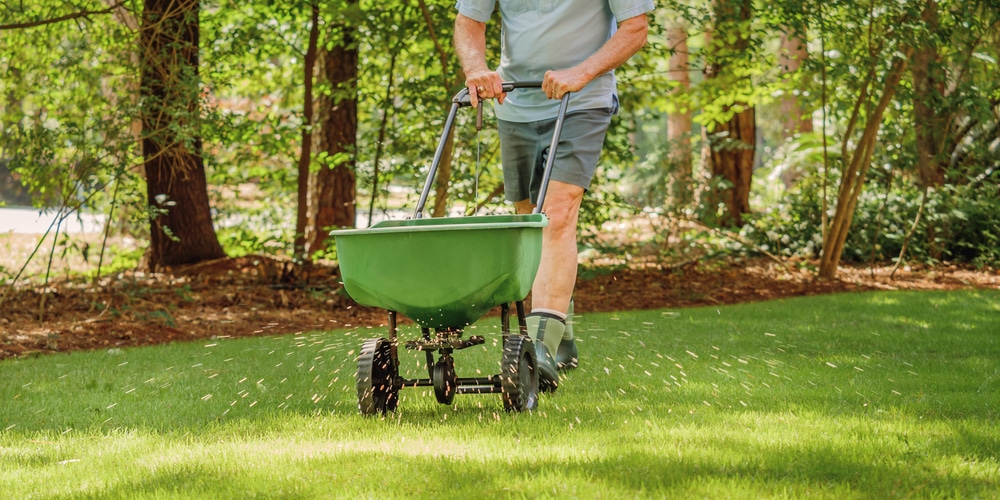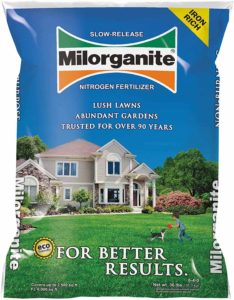Having a lawn involves a lot of work from your side. However, while some people might hate it, others find it amusing to take care of their turfs. You might already know that you shouldn’t expect to be good with watering and mowing your grass once or twice a week. You will have to check (and remove) weeds, pests, and diseases. Additionally, you’ll have to take measures to prevent nutrient deficiencies. You may be wondering which is best, ecoscraps vs milorganite?
There are many options you can use to do so. So many that selecting a suitable fertilizer for your lawn can be overwhelming. But don’t worry: we are here to help you make the process less challenging.
In this ecoscraps vs milorganite essential guide, you’ll learn all the information you must have on hand about these two popular options to understand what will work better for your lawn.
So, are you ready to start?
What are Milogranite and Ecoscraps?

Not everyone likes to use synthetic products on their lawn. And for good reasons. After all, they might harm your grass, kill beneficial insects, and even burn the soil (but only if you don’t follow the instructions on the product labels).
But we have good news! There are plenty of organic fertilizers out there that will give you excellent results!
Milogranite and Ecoscraps are two examples of such products. They are organic slow-release fertilizers that provide all the nutrients your lawn needs to thrive. However, you might have heard of Milogranite but not Ecoscraps, which many gardeners label as a “clone” of the first.
Milogranite is such a popular product that it may be hard to find during peak season (in the spring and fall) because it can sell fast. And Ecoscraps has a similar composition. But does that make it a suitable alternative? Jump to the following sections if you want to find out!
Ecoscraps vs Milorganite
Both Milogranite and Ecoscraps are granular fertilizers. You can apply them using a spreader: the tool will ensure an even application. And while the two products are excellent, you should know they are slightly different. But that doesn’t make one better than the other. It just means that one might be more suitable for your lawn’s conditions.
Cost
You might also want to consider factors such as cost. If you prefer not to spend too much on your lawn without compromising quality, you should know that Ecoscraps is slightly cheaper. We are talking about 2 dollars, which might not be a huge difference. However, it might become considerable in the long run. But with Ecoscraps, you’ll have to spread more product on your lawn.
Nutrient Content
Milogranite has a 6-4-0 NPK ratio, higher than Ecoscraps (4-2-0). So, selecting a product for your lawn depends on what you need. For instance, if you don’t want to through your soil pH off-balance, you might be better off with Ecoscraps. But if you need to save an unhealthy lawn, Milogranite might be the ideal option.
Grass Growth And Color
You can expect both products to result in similar growth patterns and colors. None is better than the other when considering these factors. So, to select one for your garden, you should account for what we mentioned before. Don’t forget to water your lawn after the treatment application to increase its absorption (and, thus, its effectiveness).
Which One Should You Choose For Your Garden?
The truth is that the choice of fertilizer for your lawn ultimately depends on your needs. Milogranite and Ecoscraps are valuable products that will support your lawn’s growth.
But since Milogranite is denser in nutrients, it is the best option to revive stressed lawns. However, it is also more expensive than Ecoscraps. So, if you have a large garden, you might want to get the latter. After all, the two products will give you a similar growth rate and even green color.
Keep in mind that neither of these fertilizers contains potassium. So, you might need to get other supplements to keep your grass healthy. After all, besides nitrogen and phosphorous, which contribute to blades and root strengths, your grass also needs potassium. The element ensures overall health and will give you a better-looking turf.
And while you are there, consider doing a soil test: you might want to detect any nutrient deficiencies and take measures to amend your lawn.
